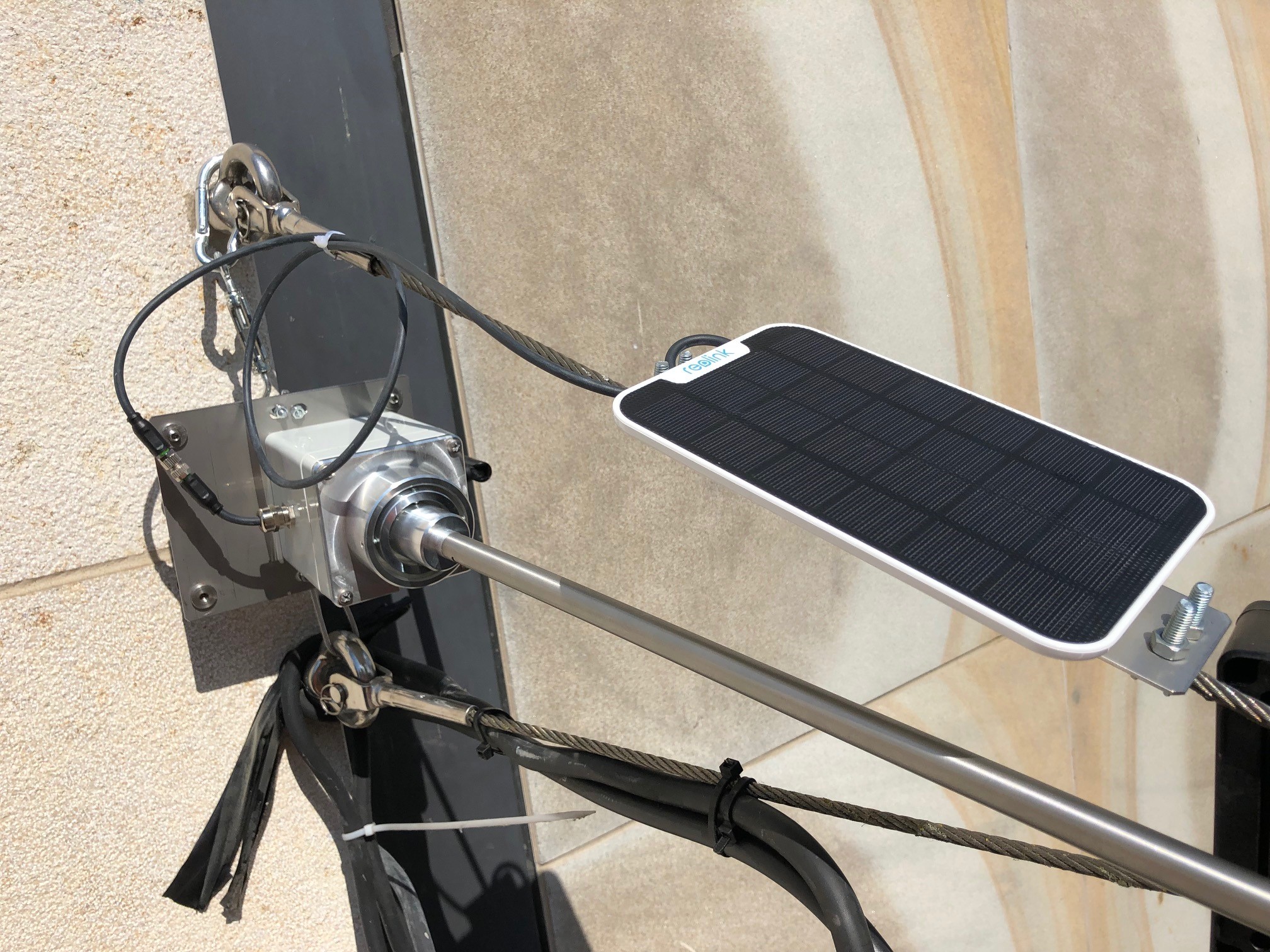SWO Netz installs smart wall anchors: Fraunhofer IZFP research project in Osnabrück
Osnabrück/Saarbrücken, September 7, 2021
They are unassuming and can thus almost be overlooked - but in the future they can possibly be used thousands of times in Germany to save human lives. We are talking about intelligent sensors for monitoring wall anchors, which have now been installed in Große Straße in Osnabrück, Germany.
The small gray boxes have now been mounted on the L&T building in Grosse Strasse and finally connected to the wire rope that holds the street lighting in Osnabrück's pedestrian zone, both with the help of a hydraulic lift. The special nature of the boxes can only be seen inside them: A novel sensor system continuously records data on loads and movements of the anchors, transmitting it via the LoRaWAN radio network of the public utility. Researchers at the Fraunhofer Institute for Nondestructive Testing IZFP can read this data and determine whether the anchors are still safe. If not, an automatic message is generated.
No need for mechanical inspection
“Usually, we have to mechanically check on a regular basis whether the anchorage is still in perfect condition. Thanks to the intelligent sensors, this can be done continuously, nondestructively and without having to be on site,“ explains Alexander Jaspers from SWO Netz. The LoRaWAN radio network used for the data transmission was set up by SWO Netz around two years ago. This radio technology can be used to remotely read data from, e.g., smart electricity meters. “There are many more potential use cases, as the example of wall anchors shows. In any case, we are pleased that the Fraunhofer Institute for Nondestructive Testing IZFP has approached us and is setting up this pilot project, which is unique in Germany, together with us,“ says SWO Netz Managing Burghard Gutowski.
Radio network as a prerequisite
“The prerequisite for the test is the LoRaWAN network that the public utility has already established in Osnabrück. This was basis for our joint research project,“ says Christoph Weingard from Fraunhofer IZFP. Theoretically, the knowledge gained can be used in many fields of application in the future. The sensors can possibly be used to monitor anchors of street lighting or overhead power lines but also to monitor the anchoring of steel nets in mountainous regions with roads threatened by falling rocks. “Thus, theoretical considerations can quickly become an application that can save human lives,“ emphasizes Christoph Weingard.
Incidentally, the sensors are powered by a solar cell and therefore act autonomously. The pilot project is a further step toward the smart city, in which not only people are networked with each other, but also objects such as the wall anchors equipped with sensors.
Background: SWO Netz GmbH
SWO Netz GmbH is a 100 percent subsidiary of Stadtwerke Osnabrück and is responsible for planning, building and operating the infrastructure networks in the city. This includes electricity, gas, water, wastewater, telecommunications and street lighting.
Editorial contact:
Sebastian Philipp
Corporate Communications
Phone:+49 (0)541 – 2002 1015
sebastian.philipp@swo.de
 Fraunhofer Institute for Nondestructive Testing IZFP
Fraunhofer Institute for Nondestructive Testing IZFP 